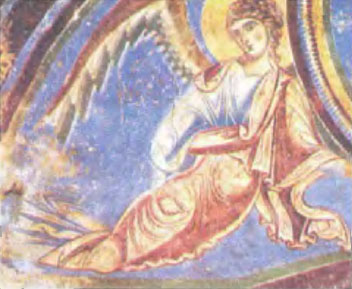4th century AD - 15th century AD
Byzantine painting

description
Byzantine painting is a movement of medieval art, the central part of which was icon painting. The movement derived from the Christianized Greek culture of the Eastern Roman Empire. The era of the Roman Empire ended with the fall of Constantinople in 1453.
Byzantine art is a spiritual and moral philosophical and religious system that carries a new aesthetic of symbolism, expressed as a departure from the naturalism of the classical tradition and a decline in artistic skills and standards towards a more abstract two-dimensional representation of the world.
Icon painting developed in close interconnection with church architecture, sculpture, mosaics, murals and enamel products. Byzantine art is also known for its painted wooden panels, ivory cutting, coinage, decoration and illustration of manuscripts.
The main colour is gold. Halftones were avoided. Most of the pictures were painted with egg tempera on wood panels or fabric glued to wood panels. Gold leaf used for halos and background. Silver, tin or lead painted with gold shellac were also used.
Key ideas:
An icon is an object to facilitate communication with the divine. The central figures of the images were Jesus, the Virgin and child, scenes from the New Testament, the life of saints. The artistic approach to the canons of Byzantine icons has been very stable for many centuries.
A specific stylization of the proportions of the human body is lengthening, thinness, some soreness, infirmity (not to be confused with old age). A look can be thoughtful, humble, detached, sad, etc.
In the artworks, the importance of certain figures is emphasized; events that occur at different times are combined. There are no elements of chiaroscuro. There is the presence of characteristic attributes (halo), gestures, poses and clothes.
